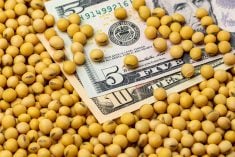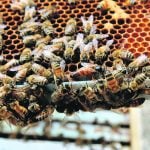Western Canadian feeder cattle prices were steady to $2 per hundredweight (cwt) higher last week. Stronger buying interest was attributed to positive feeding margins, year-end buying and positive economic data.
Run-of-the-mill mixed steer calves in central Alberta averaging 524 pounds brought back $167/cwt. Red Angus-Simmental cross steers with Ralgro implants averaging just over 600 lbs. sold for $155/cwt, landed in southern Alberta feedlot. Black Simmental-cross steers averaging 825 lbs. sold for $142 near Edmonton.
Cattle in the feedlot region of the U.S. southern Plains are under stress due to adverse weather. The area around Greeley was expected to get four to six inches of wet snow. The futures market appears to be incorporating a risk premium due to the uncertainty in beef production, which usually spills over into stronger feeder cattle prices.
Read Also

China rapeseed meal futures see largest one-day gain in almost three months after Xi–Carney talks
China’s most active Zhengzhou rapeseed (canola) meal futures posted their largest daily gain in nearly three months on Monday, after Canadian Prime Minister Mark Carney and Chinese President Xi Jinping met in South Korea last week without securing a breakthrough on tariffs.
The U.S. cow slaughter continues to come in larger than expected, confirming the lower 2011 calf crop. There is potential for very aggressive heifer retention during 2012, which will further shrink the available feeder cattle pool. Good-quality bred cows and bred heifers have reached up to $1,700 in Alberta. There is potential for additional upside, given the fact that calves under 400 lbs. have sold around $210/cwt.
There has been a round of positive economic data, which has enhanced consumer confidence and reinforced projections for stronger beef demand. Canadian third-quarter gorss domestic product (GDP) came in at 3.5 per cent while the U.S. came in at two per cent. These numbers reflect that unemployment will decline and consumer spending will increase. Restaurant spending seasonally increases from December through Marc,h which also bodes will for beef consumption.
— Jerry Klassen is a commodity market analyst in Winnipeg and maintains an interest in the family feedlot in southern Alberta. He writes an in-depth biweekly commentary, Canadian Feedlot and Cattle Market Analysis, for feedlot operators in Canada. He can be reached by email at [email protected] or at 204-287-8268 for questions or comments.












